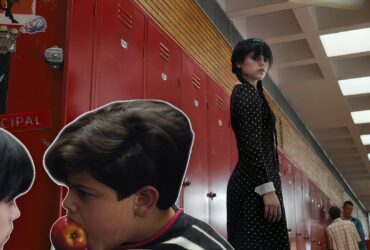Key Takeaways
- MCU is embracing the multiverse concept to explore new storylines unencumbered by single continuity.
- Marvel is drawing from comic book traditions, allowing characters who have died to return in new forms.
- The return of Robert Downey Jr. as Doctor Doom risks undercutting the emotional impact of Tony Stark’s sacrifice.
In its uncertain post-Endgame era, the Marvel Cinematic Universe has been steadily moving away from a single shared continuity and into the realm of the multiverse. This concept picked up steam in 2021, when the first season of Loki introduced the Time Variance Authority and the idea of variants from other timelines. It became even more overt with Doctor Strange and the Multiverse of Madness the following year. As the company looks ahead to phase five, six, and beyond, it seems like it’s going all in on bringing infinite realities to the MCU.
Creatively, this makes sense. The multiverse idea allows the MCU to go in almost any direction it wants, unencumbered by one particular continuity or storyline. This opens up the possibility of bringing new ideas to a shared universe that remains lucrative, but has been struggling to recapture its past successes. It also allows characters who have been killed off to return, either through a variant or by going back in time to undo their deaths. But while that might be good for the MCU’s future (and the actors’ paychecks), it comes at a steep cost for the storytelling.

Related
The MCU Needs To Go Back To Basics, But Is That Even Possible?
If Marvel Studios wants the Marvel Cinematic Universe to continue to succeed, it’s going to need to return to basics before it’s too late.
The MCU is Taking a Page From the Comics
This kind of malleable continuity has been the norm in comic books for years. Different creators have often rebooted long-running franchises and started whole new storylines independent of previous installments. Characters are killed off in big, splashy moments, only to be brought back a while later in a totally new incarnation. It seems that, with its own mutliverse, Marvel is attempting to combine this sort of freewheeling approach to continuity with the ongoing storylines and characters that audiences have come to love over so many years. While Hollywood has been in the reboot game for decades now, Marvel is now going about pioneering the idea of doing reboots within an ongoing franchise.
During its first three phases, Marvel Studios became the dominant blockbuster maker in Hollywood, crafting grand spectacle and a shared universe across dozens of films in a way that had never been attempted before on that scale. But beyond that, Marvel also took its characters seriously, delivering genuine emotional resonance to go with its action and quips. Audiences returned for movie after movie, not just for the action and the grand CGI destruction, but because they came to care about these characters. And when a character died, their loss had genuine weight and meaning.
When Vision (Paul Bettany) was killed at the hands of Thanos in Avengers: Infinity War, he was one of the few characters who could not be brought back through the Avengers’ time travel machinations in Endgame. The overwhelming grief Wanda Maximoff (Elizabeth Olsen) feels over his loss leads to the emotional finale WandaVision, still probably one of the MCU’s most moving moments. Similarly, when Thanos (Josh Brolin) sacrifices his adopted daughter Gamora (Zoe Saldaña) to gain another Infinity Stone, the shocking death resonates with the weight of her sacrifice, and the fact that her death cannot be undone.
At least, that is, until Guardians of the Galaxy Vol. 3, when a Gamora variant from an alternate timeline is introduced. Writer/director James Gunn does manage to wring some drama out of this development, as this new variant has never met Peter Quill (Chris Pratt) and thus has no feelings for him, while Peter is still mourning the loss of his Gamora. Still, the introduction of a new Gamora can’t help but undercut the gutting impact of her death and its effect on Peter and the Guardians to some extent.
Marvel’s Troubling Robert Downey Jr. Gambit
More troubling is the reveal that Robert Downey Jr. will be making his MCU return as Doctor Doom in the upcoming Avengers: Doomsday. While little is known about what plans Marvel has for Downey’s Doom, there have been several theories floated in recent months, one being that this incarnation of the character might be a variant of Tony Stark. If this does turn out to be the case, it would severely blunt the impact of Stark’s death at the end of Endgame.
Tony Stark’s sacrifice is possibly the defining moment of the MCU so far, the culmination of a decade of character development that saw Stark transform from an egomaniacal playboy to a self-sacrificing hero. His decision to save the universe at the cost of his own life gave the character — and the actor, who had kicked off the MCU back in 2008 — a fitting sendoff that reverberated through several subsequent projects. Whether Downey’s Doom is a Stark variant or not is still purely speculative at this point, but bringing the actor back at all dampens the power — and the finality — of his final outing.
It’s entirely possible that most audience members won’t care about any of this, that their excitement at seeing the heroes they love onscreen again, in one form or another, will overpower their memories of those heroes’ deaths. The multiverse concept has the potential to breathe new life into a franchise that has struggled creatively in recent years, allowing filmmakers to get a bit more creative. There are already signs of this, with Fantastic Four: First Steps promising to bring a new retro-futuristic style to the MCU. But for a series that has always excelled at bringing genuine pathos to its expansive storytelling, it’s somewhat disheartening to see how quickly those emotional moments can be undone with the jump of a timeline.















Leave a Reply